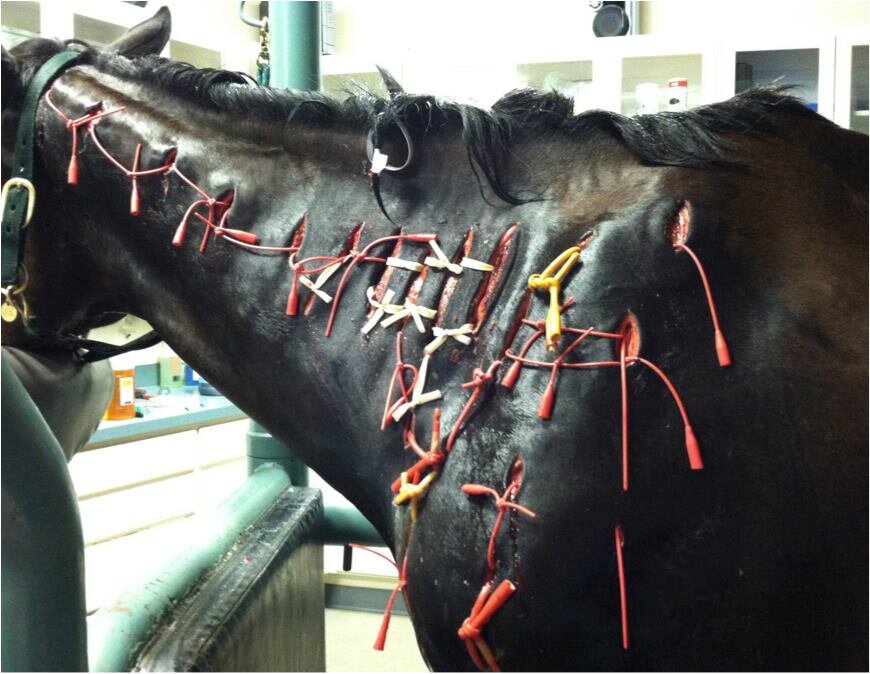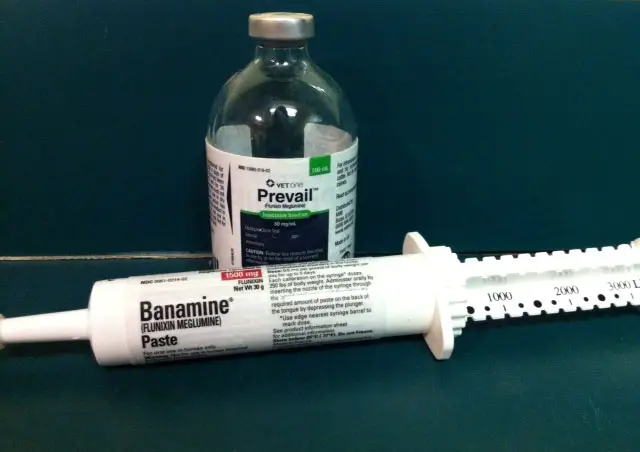The amount of bute to give a horse depends on its weight and the severity of the condition. In general, the recommended dosage is 1-2 grams per 500 pounds, administered orally every 12-24 hours.
Bute should be used under the supervision of a veterinarian, as prolonged or excessive use can lead to serious health problems. Managing a horse’s pain and inflammation is essential for their well-being and performance. One commonly used medication in equine medicine is phenylbutazone, commonly known as bute.
This non-steroidal anti-inflammatory drug (NSAID) is widely prescribed for various ailments, including lameness, arthritis, and musculoskeletal injuries. However, when administering bute to a horse, it’s crucial to determine the correct dosage. The dosage depends on the horse’s weight and the severity of the condition being treated. This article provides guidelines on how much bute to give a horse, ensuring safe and effective treatment while minimizing the risk of adverse effects. Remember, always consult with a veterinarian for accurate dosage recommendations tailored to your horse’s specific needs.
What Is Bute Medication?
What is Bute Medication?
Bute medication, also known as phenylbutazone, is a popular nonsteroidal anti-inflammatory drug (NSAID) used in horses to relieve pain, inflammation, and fever. It is one of the most commonly prescribed medications for equine musculoskeletal conditions.
Definition and purpose of Bute medication:
Bute medication is a potent analgesic and anti-inflammatory drug that works by inhibiting the production of prostaglandins, which are responsible for pain and inflammation. It is commonly used to alleviate discomfort in horses suffering from lameness, arthritis, joint injuries, and other musculoskeletal issues.
In horses, Bute medication helps reduce pain and inflammation, allowing them to move more comfortably. It is often prescribed by veterinarians as part of a comprehensive treatment plan that may include rest, physical therapy, and other medications.
How Bute medication works in horses:
Bute medication works by blocking the enzyme cyclooxygenase (COX), which is responsible for the production of prostaglandins. By reducing prostaglandin production, Bute medication helps alleviate pain, reduce swelling, and improve mobility in horses.

Credit: www.irongateequine.com
Factors To Consider In Proper Bute Dosage
Proper dosage of Bute (phenylbutazone) for horses depends on several factors. Two important considerations are the weight and age of the horse. The severity of pain or inflammation also plays a role in determining the dosage. It is essential to follow safety precautions to ensure the horse is receiving the correct amount of medication.
Horses that weigh less or more than the average size may require adjustments in the dosage. Younger horses may have different tolerances compared to older ones. Moreover, the level of pain or inflammation experienced by the horse is key in determining the dosage. It is important to consult with a veterinarian to accurately assess the severity of the condition and determine the appropriate dosage.
Safety precautions must be followed when administering Bute. It is essential to carefully measure the dosage using a syringe or dosing device provided by the veterinarian. Additionally, it is important to closely monitor the horse for any adverse reactions or side effects. If any concerns arise, it is crucial to seek veterinary advice promptly.
Determining The Ideal Bute Dosage For Your Horse
When determining the ideal bute dosage for your horse, it is crucial to consult with a veterinarian. They will have the necessary expertise to recommend the appropriate dosage based on various factors. Firstly, the horse’s medical history plays a significant role in determining the correct dosage. The vet will consider any pre-existing conditions or medications the horse may be on. Secondly, assessing the horse’s current condition is essential. Physical examination and observation can help determine the severity of any injuries or inflammation present, which will influence the dosage. The vet will consider the horse’s weight, age, and overall health to ensure the right amount of bute is administered.
Recommended Starting Dosage For Horses
Recommended Starting Dosage for Horses:
When administering Bute to your horse, it is important to follow a general guideline for the initial dosage. The starting dosage for Bute can vary depending on the horse’s weight and condition. As a general rule, the recommended dose is 1-2 grams per 500 pounds of body weight given every 12 hours. However, it is essential to consult with your veterinarian for specific instructions.
Adjustments to the initial dosage may be necessary based on the horse’s response. It is crucial to monitor the horse closely for any signs of improvement or adverse reactions. If the horse does not show any improvement or experiences negative side effects, such as gastrointestinal issues or kidney problems, consult your vet for further guidance.
Bute can be a useful medication for managing pain and inflammation in horses, but precise dosing and veterinary supervision are crucial for your horse’s well-being. Always follow the instructions provided by your veterinarian to ensure the safety and effectiveness of the treatment.
Monitoring And Adjusting Bute Dosage
Monitoring and adjusting the dosage of Bute for horses is crucial to ensure their well-being and manage any potential side effects. It is important to recognize any signs of discomfort or side effects in horses receiving Bute medication. These signs may include changes in behavior, appetite, or physical appearance. If any of these signs are observed, it is recommended to consult with a veterinarian for a potential dosage adjustment.
Potential Side Effects Of Bute Medication
Potential Side Effects of Bute Medication
Common side effects and their symptoms:
| Side Effect | Symptoms |
|---|---|
| Gastrointestinal upset | Diarrhea, colic, loss of appetite |
| Ulcers | Weight loss, decreased performance, poor coat condition |
| Kidney damage | Increased thirst, increased urination, weight loss |
| Decreased blood clotting ability | Excessive bleeding from wounds or nosebleeds |
Long-term effects and risks of prolonged Bute use:
Continuous use of Bute for extended periods can lead to gastrointestinal ulcers and renal (kidney) damage. It can also cause a decrease in the horse’s blood clotting ability, resulting in excessive bleeding. Additionally, long-term Bute use may lead to poor performance, weight loss, and poor coat condition. It is important to monitor the horse closely and consult with a veterinarian to mitigate the risks associated with prolonged Bute administration.
Alternatives To Bute Medication
When it comes to managing pain and inflammation in horses, there are several natural remedies that can be used as alternatives to bute medication. These options provide effective relief without the potential side effects associated with long-term use of non-steroidal anti-inflammatory drugs (NSAIDs).
One natural remedy is turmeric, a spice known for its anti-inflammatory properties. It can be used as a supplement or added to the horse’s feed. Another option is devils claw, an herb that has been used for centuries to treat pain and inflammation. Yucca root is also commonly used in herbal formulations for its natural anti-inflammatory effects.
Aside from herbs, essential oils such as lavender and peppermint can be applied topically to provide pain relief. Acupuncture and chiropractic adjustments are alternative therapies that can help address the underlying issues causing pain and inflammation.
Remember, it is crucial to consult with a veterinarian before using any alternative treatments to ensure they are safe and appropriate for your horse’s specific condition.
Frequently Asked Questions On How Much Bute To Give A Horse
How Much Bute Should You Give A Horse?
Bute dosage depends on the horse’s weight, pain level, and specific condition. Consult your veterinarian to determine the appropriate dosage of Bute for your horse to avoid under or overdosing.
What Are The Side Effects Of Giving Bute To Horses?
Side effects of Bute can include gastric ulcers, kidney and liver damage, and gastrointestinal issues. Long-term use may lead to colic or laminitis. Consult your vet about proper dosage and potential side effects before administering Bute to your horse.
How Long Does It Take For Bute To Work In Horses?
Bute can start taking effect within an hour of administration. However, the duration of effectiveness may vary depending on the horse’s condition and the specific medication prescribed. Consult your vet for accurate information and follow their instructions accordingly.
Conclusion
Determining the proper dosage of bute for a horse is crucial for their well-being. By understanding their weight and specific medical condition, you can ensure their comfort and pain management. It’s essential to consult with a veterinarian for accurate guidance, as they can provide the suitable dosage and monitor the horse’s response.
Remember, the health and happiness of our equine friends depend on our responsible care.

